
At what lichess rating in blitz/rapid can you expect to get the title
Chess titles have always been a kind of "quality mark" for a player, but how much do these prestigious titles correspond to real playing strength in the online world?Introduction
Chess titles have always been a kind of "quality mark" for a player, but how much do these prestigious titles correspond to real playing strength in the online world? To answer this question, I conducted an extensive study, analyzing 4000 randomly selected titled players on the Lichess platform.
Research goal: to identify patterns between official FIDE titles and online ratings, as well as to determine which rating gives real chances of obtaining a coveted title.
Methodology: To ensure reliability, I only considered ratings with a deviation less than 85 points, which guarantees relative stability of indicators. Important note: the sample for Classical and Correspondence time controls turned out to be insufficient, so these data should not be considered
Graph 1: Distribution of Ratings by Titles and Time Controls
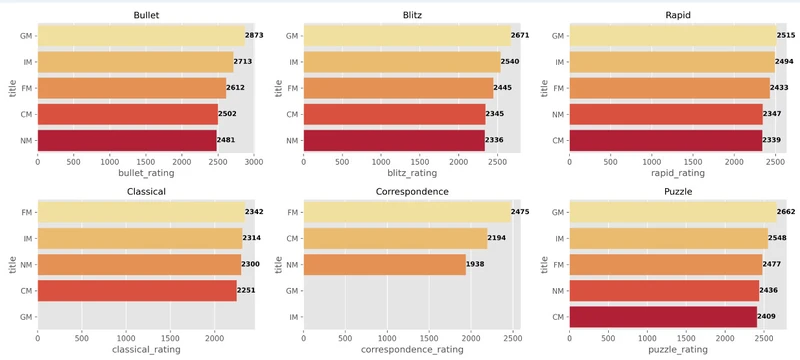
Key observations:
- Hierarchy preservation: A clear hierarchy is evident across all time controls — Grandmasters (GM) demonstrate the highest average rating, followed by International Masters (IM), FIDE Masters (FM), and so on.
- Stable distance: The difference between adjacent titles (for example, between GM and IM) is approximately 100-150 points in rating, indicating a certain "step" in mastery.
- Tactical superiority: In Puzzle ratings, Grandmasters also dominate with an average score of 2662, confirming the direct link between tactical abilities and overall chess strength.
Graph 2: Quantitative Distribution of Players by Titles
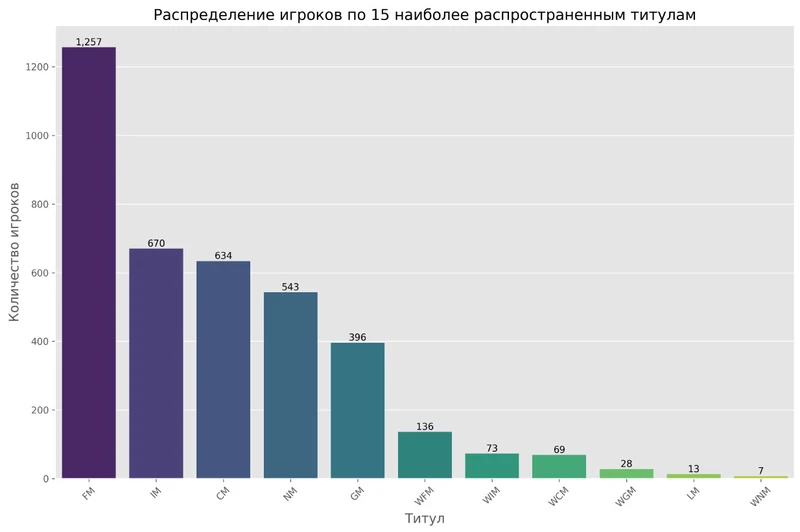
Interesting facts:
- FM dominance: FIDE Masters form the largest group of titled players on Lichess — 1257 people.
- Balance of IM and CM: International Masters and Candidate Masters are represented in almost equal numbers — 670 and 634 respectively.
- Rarity of women's titles: Women's titles (WFM, WIM, WGM, WCM) and the WNM title are significantly less common on the platform, reflecting the general demographics of chess.
Graph 3: Comparison of Standard and Women's Titles
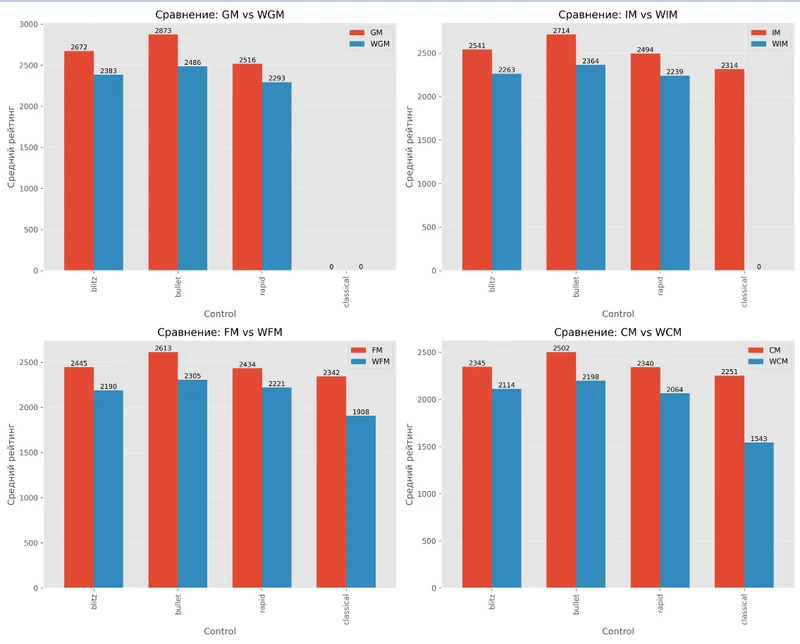
Identified differences:
- Systemic gap: In all categories, standard titles demonstrate higher average ratings than their women's counterparts.
- Scale of differences: The difference between GM and WGM is an impressive 200-400 points depending on the time control.
- Average indicator: Women's titles require approximately 300 points lower playing strength than their male counterparts.
- Low threshold for WCM: The average rapid rating for WCM is only 2064 points — a surprisingly low indicator (which may vary depending on the country of title awarding).
Note: Data for classical time control are not considered due to insufficient sample size. For other time controls, the sample is statistically significant.
Graph 4: Average Rating by Titles and Time Controls
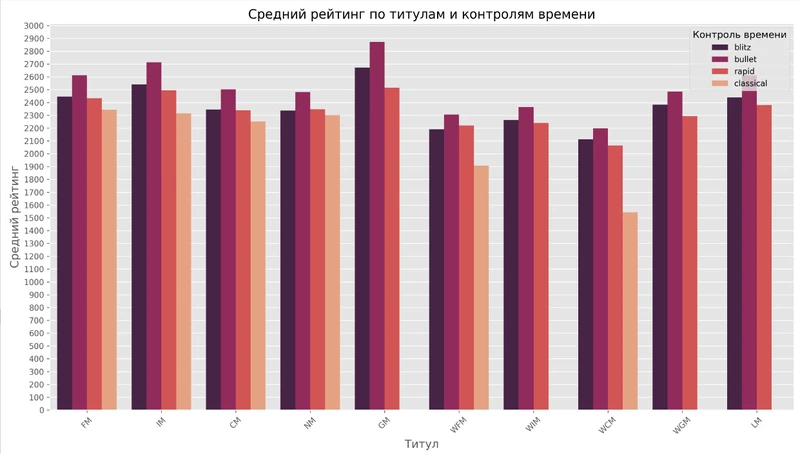
Conclusions and Practical Application
My analysis revealed several important patterns between official chess titles and real playing strength on Lichess:
- Hierarchy confirmation: The traditional title ladder (GM > IM > FM > CM > NM) indeed reflects the objective playing strength across all time controls.
- Gender gap: There is a significant difference in ratings between standard titles and their women's counterparts, which corresponds to the differences in FIDE requirements for these titles.
- Research limitations: It should be noted that 4000 players is not an exhaustive sample, and for a more accurate analysis, it is necessary to examine a larger number of profiles.
- Practical benchmark: If your rating in rapid and blitz exceeds 2350 points, you have real chances of obtaining the CM title in official competitions.
You may also like
 CM HGabor
CM HGaborHow titled players lie to you
This post is a word of warning for the average club player. As the chess world is becoming increasin… NEXTOR001
NEXTOR001When Do Chess Players Make the Most Mistakes?
We analyzed over 100 million games from Lichess over the past month to see how often players make in…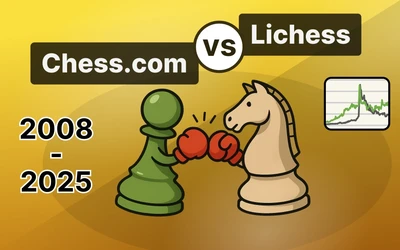 ChessMonitor_Stats
ChessMonitor_Stats